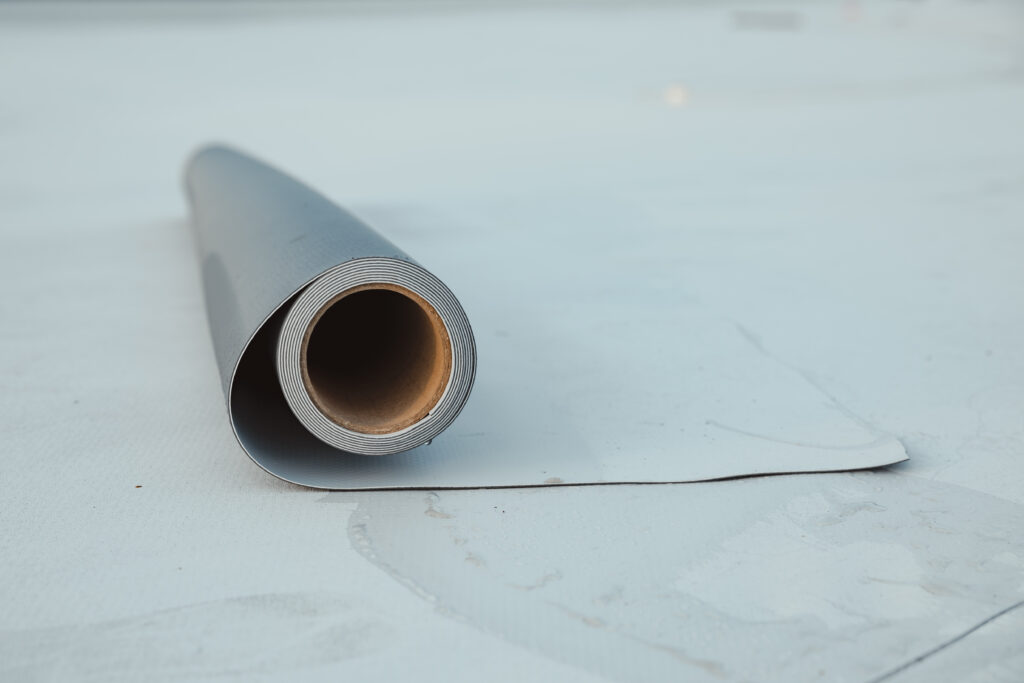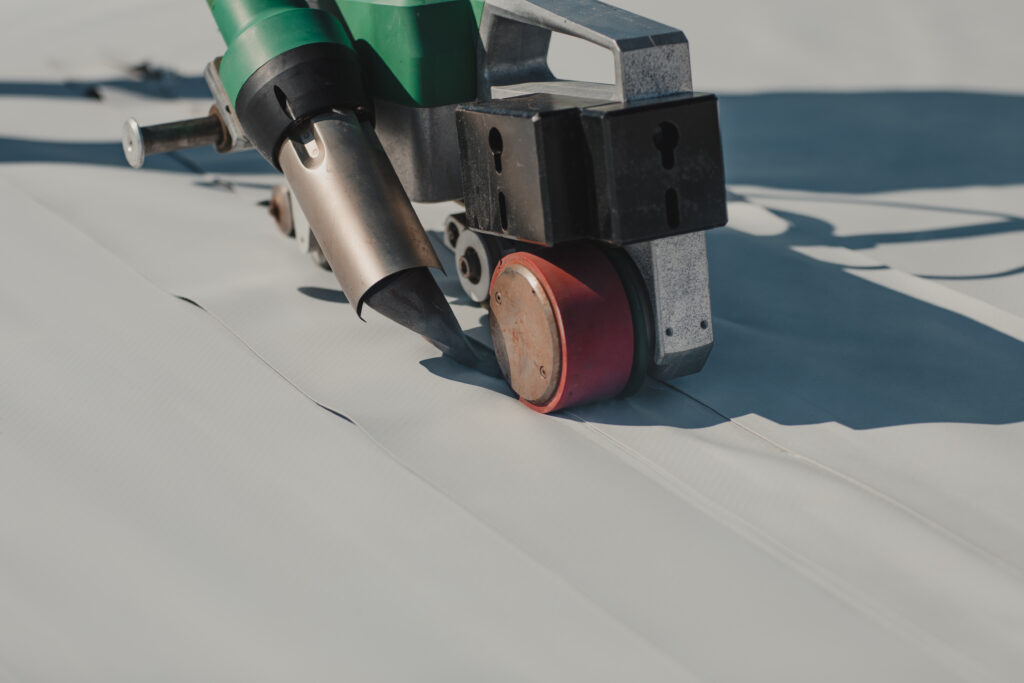PVC installation
Providing PVC Installation Services to Virginia and North Carolina



PVC Installation
PVC (polyvinyl chloride) roofing is a great choice for low-slope and flat roofs. Installing PVC roofing requires careful planning and execution to ensure a watertight and durable roof.
At Roofing Solutions, we’ve created a comprehensive guide to PVC installation, so that you can feel confident knowing the proper steps when having your businesses PVC roof installed.
Here’s the Roofing Solutions guide on how to properly install PVC roofing.

The Roofing Solutions Guide To PVC Installation
Preparation and Safety
1. Assessment: Assess the roof structure and substrate to ensure it’s suitable for PVC roofing installation. Repair any damaged areas and ensure the substrate is clean and smooth.
2. Safety Measures: Prioritize safety by using appropriate personal protective equipment (PPE) such as gloves, safety glasses, and non-slip footwear. If working at heights, use fall protection gear.
Materials and Tools
1. PVC Roofing Material: Purchase PVC roofing membrane sheets of the appropriate thickness and size for your project.
2. Adhesives and Sealants: Acquire PVC roofing adhesive, seam tape, and sealant recommended by the manufacturer.
3. Tools: Gather tools including a utility knife, measuring tape, chalk line, roofing nails or screws, screw gun, seam roller, and a heat gun (if heat welding is required).
Installation Process
1. Measure and Plan: Measure the roof area accurately to determine the quantity and size of PVC roofing membrane sheets needed. Plan the layout to minimize waste and ensure proper drainage.
2. Prepare Substrate: Clean the roof substrate thoroughly to remove dirt, debris, and any existing roofing material. Repair any damaged areas and ensure the substrate is dry and smooth.
3. Apply Adhesive: Apply PVC roofing adhesive to the clean substrate using a trowel or roller. Spread the adhesive evenly across the surface, ensuring full coverage.
4. Install Roofing Membrane:
a. Roll out the PVC roofing membrane sheets onto the adhesive, starting from one edge of the roof and working towards the other.
b. Ensure the membrane is positioned accurately and smooth out any wrinkles or air bubbles.
c. Overlap the edges of adjacent sheets according to the manufacturer’s recommendations, typically 2-3 inches for seams.
d. Use a seam roller to press down on the seams and ensure a tight seal.
e. If heat welding is required for seam sealing, use a heat gun to carefully heat and weld the seams together.
5. Secure Edges and Seams:
a. Secure the edges of the roofing membrane using roofing nails or screws along the perimeter of the roof.
b. Apply PVC roofing sealant along the edges and seams to further reinforce the waterproofing.
6. Install Flashing and Accessories:
a. Install flashing around roof penetrations such as vents, chimneys, and skylights to prevent water infiltration.
b. Seal around flashing and other penetrations using PVC roofing sealant.
7. Final Checks and Cleanup:
a. Inspect the installed PVC roofing for any visible defects, loose seams, or areas that may require additional sealing.
b. Clean up any debris or waste materials from the roof and surrounding areas.
Expert PVC Installation
If you’re unsure about any aspect of the PVC installation process or if the roof is complex, consider consulting with a professional roofing contractor.
Professional contractors have the expertise and experience to ensure the PVC roofing is installed correctly, meets industry standards, and is affordable.
In fact, we are here to serve as your professional contractor. Give us a call at (434) 432-4602 or fill out this form and we will get in touch with you shortly!

Ready To Take The Next Steps?
Fill Out The Form Below To Receive Your Free Estimate!
Contact Us Today!
Don't Take Our Word for It...
Let Our Work Speak for Itself!

Carlisle's Perfection Award
Carlisle's Perfection Award is presented to roofing applicator's with roof installation warranty claims that rank in the top 5% of all US and Canada. This shows the awarded applicators are providing exceptional service, and the installed roofs rarely are filed for a claim, ensuring customers they are working with a top-of-the line roofing company.

Carlisle's Perfection Council
Carlisle's Perfection Council chooses the most prestigious and highly rated roofing applicators to serve on an advisory board, which provides support roofing installers across the nation. This ensures applicator's are installing the highest quality roofing materials.

Carlisle's Execellence in Single-Ply
The Excellence in Single-Ply (ESP) award is deemed as one of the most prestigious awards in the roofing industry, assuring customers they are working with the most qualified and expert roofers.

Carlisle's Centurion Applicator
The Centurion Applicator award is presented to a roofing company that has achieved 100 'perfect 10' roof installs, meaning that an inspector gave a perfect score of '10' applying new roof systems.
